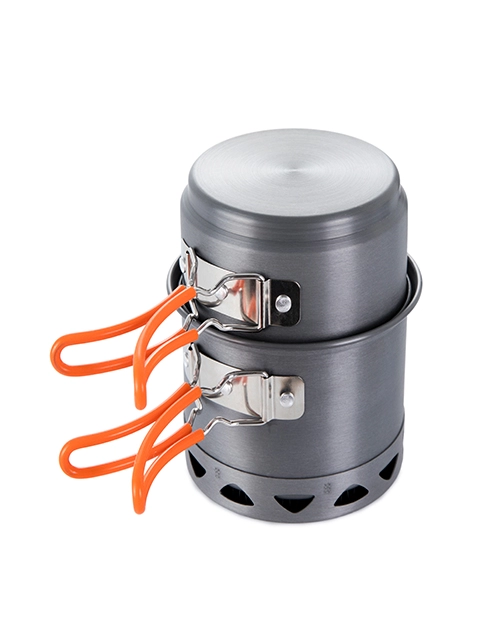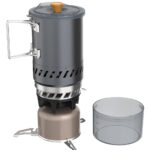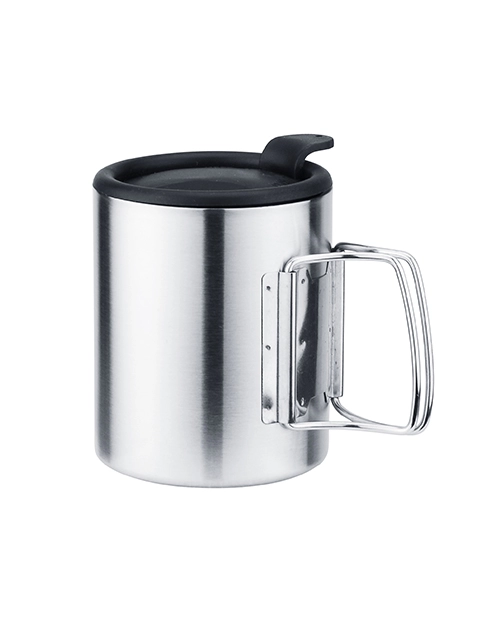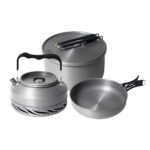Portable wood stoves serve not only as heaters or cookers but also as a multi-use answer for campers, tiny house dwellers, or anyone looking for a very efficient, environmentally conscious substitute in place of a conventional heating-cooking system. Whether it’s camping for a weekend, preparing for emergencies, or getting used to the idea of self-sustainable living, incorporating a portable wood stove most certainly makes a difference in the experience.
This blog post covers everything you should know to select your ideal stove and guarantees that you make a balanced choice between functionality, portability, and safety.
What Is a Portable Wood Stove?
A portable wood stove refers to a compact, lightweight device used for heating and cooking; typically, such a stove uses wood or biomass for fuel. Unlike traditional wood stoves, however, portable variants are designed for mobility and therefore stand out for both outdoor trips and indoor areas with small spaces.
These outdoor camping stoves are manufactured using strong and durable materials such as stainless steel, titanium, or even simple cast iron, making them last longer under hard environmental conditions.
Key Features to Consider Before Buying
Invest in a portable wood-burning stove by knowing the important features. Here is a detailed analysis:
1. Weight and Portability
A portable camping wood stove should be light enough to carry, especially for long distances. Backpackers love titanium units for their lightweight features, but slightly heavier models can be better in terms of retention of heat and stability. Consider a flat or disassembled design for easy transportation.
2. MaterialTitanium:
Ideal for both hikers and campers because of its lightweight and resistance to rusting.
3. Stainless Steel:
A mid-point between strength and weight; hence, most of the multipurpose stoves are made of stainless steel.
4. Cast Iron:
Heavy but excellent for indoor purposes. A portable indoor wood stove made of cast iron retains heat for extended periods, reducing the need for frequent refueling.
5. Fuel Efficiency
The efficiency of fuel is very much applicable to any portable wood stove. Advanced designs come with an air control system, regulating the oxygen intake for maximum combustion. This provides the highest output of heat but uses minimal amounts of wood, making it environmentally friendly.
6. Multi-Functionality:
Others can be used both as heaters and cooking devices and are ideal for campers or those in relatively small quarters. A camping portable wood stove with a flat cooking surface or built-in grill can make outdoor meal prep easier.
7. Safety Features:
With appliances that must be used indoors, the element of safety comes into play. Spark arrestors, insulation around handles, and snug doors will prevent accidental burns or fire hazards. A portable indoor wood stove will also have proper ventilation attachments that will direct smoke outside.
Types of Portable Wood Stoves
1. Portable Camping Wood Stoves
They are designed for outdoor purposes and tend to focus on the issues of portability and ease of setup. Lighter and more compact, a camping portable wood stove would do well on hikes, when going fishing, or car camping.
2. Portable Indoor Wood Stoves
Smaller compared to the general wood stoves, they do wonders for cabins, tiny houses, and RVs. Many models of portable indoor wood stoves come with a glass viewing window and enhanced safety features, which ensure comfort and safety while providing practical heating.
3. Collapsible Stoves
For those concerned with portability, the collapsible stoves are the way to go. They fold down into flat shapes, which slip into backpacks easily. As they do not last as long as cast iron stoves, they are perfect for minimalists on the move.
4. All-in-One Stove
These stoves are versatile. They can be used as cookers and heaters. A flexible portable wood stove can save you money and space if you like being in nature quite a lot.
Benefits of Using a Portable Wood Stove
1. Eco-Friendly Solution
A portable wood-burning stove uses renewable resources like wood for fuel. They are friendlier to the environment than gas stoves or electric ones, mainly if the right types of wood are used to reduce the carbon footprint.
2. It Is Cost-Effective
Wood is pretty cheap compared to propane or electricity, mainly if one is deep in the sticks. After a while, the money saved from using a portable stove wood piles up and makes the purchase well worth it.
3. Versatility
A portable camping wood stove or portable indoor wood stove can be adapted to various situations and settings, such as outdoor camping or emergency heating.
4. Durable and Long Lasting
High-quality stoves are made to last, with materials like stainless steel and cast iron often ensuring many years of reliable use. Proper maintenance extends that further.
5. Independent Heat Source
Unlike electric or propane stoves, the portable wood stove isn’t dependent on any other power sources. Therefore, it’s very efficient in off-grid living and foul weather conditions.
Using a Portable Wood Stove Safely
1. Location
Keep the stove level, even on a non-flammable surface. Keep it away from flammable materials such as tent walls, curtains, or wooden furniture.
2. Ventilation
It is very critical to ensure that your portable indoor wood stove installation is done in the right manner to avoid accumulating carbon monoxide. It will always require an exhaust pipe or chimney to bring smoke outside.
3. Choosing the Right Fuel
Only burn dry, well-seasoned hardwoods like oak or maple. Green or damp wood will make fumes that will damage your stove.
4. Monitor the Fire
Do not leave burning any portable wood stove unattended. This is greatly important when it is used outdoors in windy situations or indoors in confined areas.
5. Emergency Preparedness
Keep a fire extinguisher, water bucket, or sand on hand in case of emergencies. For a portable camping wood stove, a simple fire blanket will do the trick.
Long-Term Care Tips
Keep your portable wood-burning stove alive for many years with these simple care steps:
- Cleaning: Remove ash and soot after every use.
- Inspection: Check for cracks, loose parts, or warping. For a portable camping wood stove, be extra careful around the hinges and folding mechanisms.
- Preventing Rust: Coat cast iron stoves with oil and store them somewhere dry.
- Spare Parts: A gasket or supplementary air regulator can be retained for possible repairs.
Conclusion
A portable wood stove is environmentally friendly and fit for versatile uses of heating and cooking in various places. Whether for outdoor escapades, as a portable camping wood stove, or for indoor use, with some emergency heating needs, suitable models will cater to your requirements. Consider buildings, safety, and portability, and you are sure to be well guided to a very informed decision that will serve you for many years. If you are looking for wood stoves, you can contact us.
Frequently Asked Questions
1. Can I use a portable wood stove indoors?
Yes, but only if it is called a portable indoor wood stove, and it has all the required safety installers and effective means for the elimination of smoke and/or carbon monoxide.
2. What type of wood is best for burning in a portable wood stove?
Best to use well-dried, seasonable hardwoods such as oak, hickory, or maple. Hardwoods will last longer, burn hotter, and create less smoke compared to softwoods.
3. How do I maintain a portable wood stove?
Clean out all ash and soot regularly. Inspect for any type of damage and store in a dry place to prevent rusting. In the case of a portable camping wood stove, make sure hinges and other foldable parts remain functional.
ODM services
Looking for reliable camping stove wholesale? At DeerMaple, we specialize in ODM services, offering high-quality, innovative outdoor stoves tailored to your needs.









